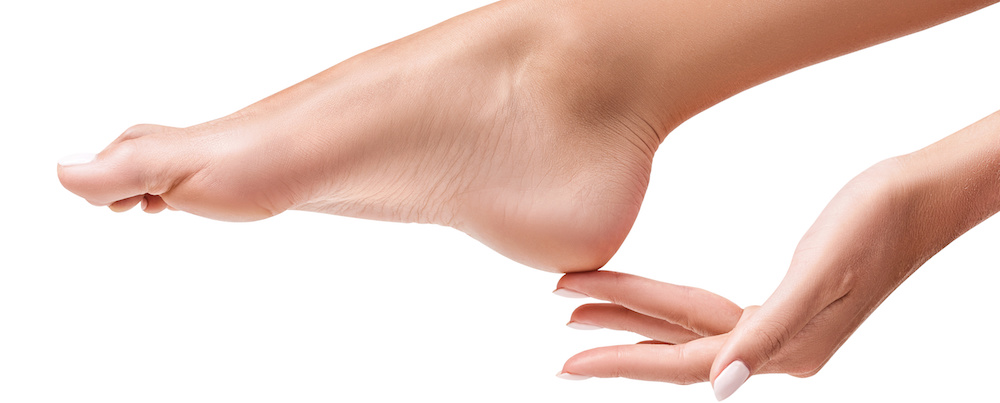7 Tips For Preventing Heel Pain
“Prevention is the best medicine.”
Sure, it’s a cliché. But it’s true!
Of course, not all injuries, illnesses, or conditions are preventable. But many of them are, including some of the most common ones we see at our office.
Take heel pain, for example—probably the single most common symptom we hear about from our patients. By some estimates, there are about two million Americans suffering from it right now. (Maybe you’re one of them.)
Now, we can provide all kinds of advanced treatments for heel pain, including drug-free regenerative options like laser therapy. We can have you feeling better quickly, even after months of suffering. And that’s great news!
But the truth is that if you don’t practice good preventative care after treatment, you’re very likely to suffer from heel pain again.
And again.
And again.
As much as we like you and love seeing you at our office, we’d rather you be out in the world living your life to the fullest! So please, follow these tips and let us know if you start experiencing pain again—hopefully you won’t have to!
Wear supportive shoes
A good, comfortable pair of shoes that’s matched appropriately to your foot type, size, and activity is an absolute must. The right pair should cushion your heel, support your arch, and reduce stress and fatigue. You should also have sport-specific shoes for any particular athletic activities you regularly engage in.
Remember that feet swell over the course of the day and do continue to change shape over time even in adulthood. So, go shoe shopping later in the afternoon and evening and always measure your feet and try on before you buy.
Remember also that obvious signs of exterior wear aren’t the only potential signal that your shoes need to be replaced. Midsoles (which provides most of the cushioning) get compressed over time, too. Old shoes past their prime just may not be up to the task of protecting your heels the way they used to.
Limit use of bad shoes (or going barefoot)
Perhaps an obvious, implied follow-up to point number one—but worth mentioning on its own regardless!
Let’s drill this point home. Don’t be tempted to buy shoes you know are too short, too long, too wide or too narrow just because they’re the style and color you want. A comfortable fit that protects your feet properly is the most important point.
Certain styles are linked with heel pain as well. Ballet flats, for example, offer virtually nothing in the way of arch support or cushioning for the heels, and should be avoided if possible. Flimsy flip flops have the same problem, and should be restricted to beach, pool, and locker room use only—don’t try to walk around all day in them!
Avoid walking barefoot on hard, flat surfaces as well. Our bare feet were not designed with linoleum or concrete in mind!
Wear your orthotics! (Check them regularly, too)
If we prescribed custom orthotics for you as part of your heel pain treatment, make sure you continue to wear them every day! Like glasses or contacts, they only help when they’re actually on your feet!
Our custom orthotics are made from advanced EVA blended materials for superior durability, support, flexibility, and comfort. They’re a huge upgrade over generic store-bough insoles and can even be used successfully in high-stress athletic applications. They are one of the best ways to prevent future heel pain, even among very active people.
That said, while custom orthotics are extremely durable, they are not invincible and may not fit forever—especially if you’ve experienced a recent lifestyle change due to surgery, pregnancy, etc. You should see us at least once a year to have your orthotics inspected and adjusted (if necessary), and also let us know if you observe any damage to the orthotic—or if you start to experience heel pain again.
Ease into new activities
Hey, we all need time to adjust. Your heels are the same way. If you’re planning to start a new active hobby, begin training again after the offseason, or even just change up your exercise routine, make sure you start slow.
Increase the intensity only by about 15% each week, as you are able. This will allow your feet to adapt to new challenges without getting overtaxed early in the process.
Mix up your activities
Maybe you really love to run, play basketball, or dance. That’s great! We want you to follow your passions. But heels can become stressed and develop chronic pain if you overuse and abuse them with the same small selection of high-impact activities without adequate rest and recovery time built into your schedule.
That’s why we recommend cross-training and other exercises that don’t work your feet and joints so hard. Swimming is a great option. So is cycling or weight training.
Do what you can to rest your feet regularly throughout the day
We get it. Many people expected to be on their feet for most of the day. Teachers. Factory and warehouse workers. Construction workers. Medical personnel. Service and hospitality professionals. Not everybody has the “luxury” of sitting at a desk most of the day (although that comes with its own set of problems).
Still, think about ways you can incorporate more “breaks” for your feet in order to reduce the stress and pain. For example:
- Take full advantage of whatever opportunities you have to sit and put your feet up.
- Make extra, extra sure you have a great pair of shoes for your occupation or activity.
- Soften the surface you stand on by placing a rug or rubber mat on the floor at your workstation.
- Take time to stretch, roll your ankles, and get the blood flowing with simple exercises several times per day, even for just a couple of minutes at a time.
Maintain a healthy weight
It’s simple physics. The heavier you are, the more force your heels have to contend with every time you take a step.
Since the actual impact force can be equivalent to several times your body weight (especially if you’re running or jumping), maintaining a healthy weight can drastically reduce foot strain and heel pain.
With these tips, we certainly hope you can keep the heel pain at bay for the foreseeable future!
If not, please don’t hesitate to call us at any time for an appointment—just dial (520) 545-0202. We will do everything we can to help you and get you back to what you love in the shortest possible timeframe.
Contact Us
Office Hours:
Monday - Friday
8:00AM - 5:00PM
Tucson Foot & Ankle Institute:
7406 N. La Cholla Blvd.
Tucson, AZ 85741
Phone: (520) 545-0202
Fax: (520) 545-0201
© Tucson Foot and Ankle Institute. All Rights Reserved. | Privacy Policy



